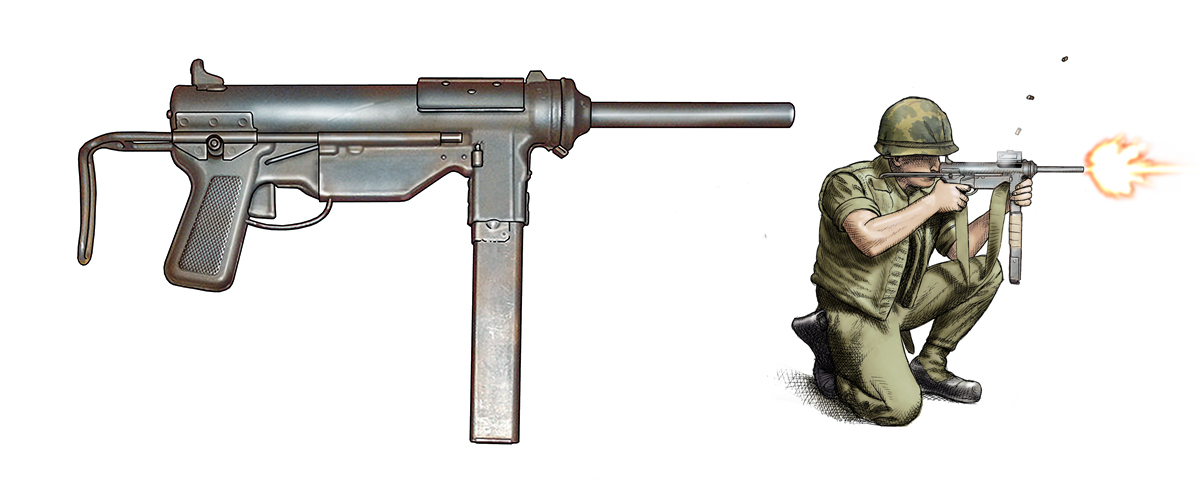Commonly known as the “Grease Gun” because of its similarity in appearance to the mechanic’s tool of the same name, the M-3 submachine gun was the simplest firearm issued to U.S. combat troops in the 20th century. In Vietnam, the Grease Gun was a favorite because it provided instant close-range firepower, was tolerant of the field environment and was easy to maintain.
Entering U.S. Army service in 1943 as a low-cost replacement for the 1928 Thompson or M-1 submachine gun, the M-3 and its improved M-3A1 variant saw extensive service in World War II and Korea. The initial production model, with its prominent cocking handle, had been replaced completely by the M-3A1 before any U.S. troops deployed to Vietnam. Lighter and more reliable than the earlier version, the M-3A1 was issued to South Vietnamese army, air force and regional forces as part of America’s military assistance program. American forces also carried the M-3A1, particularly in the early years before the M-16 was issued in large numbers. Even then, virtually every American and South Vietnamese tank crew carried at least one M-3A1 aboard. It could also be found on U.S. Navy ships, river gunboats, among SEAL teams and in military police units.
The Grease Gun was a blowback-operated submachine gun that fired a .45-caliber pistol round from a 30-round magazine loaded from underneath the receiver. It could be easily converted to fire 9mm ammunition. The M-3A1 fired over an open bolt and only in fully automatic mode. It had no mechanical means of disengaging the trigger. Inserting the magazine loaded the weapon, and opening the ejector port made it ready to fire. Closing the ejector port prevented it from firing. Some guns had a flash hider, but that was not a standard feature.
All parts of the M-3A1 were stamped except for the barrel, bolt and firing mechanism, which were precision machined. That not only reduced manufacturing costs, but it also facilitated field maintenance. One could cannibalize a damaged weapon to repair a salvageable one. The Grease Gun was a robust, comparatively light automatic weapon that was easy to clean and maintain.
The only consistent complaints about the M-3A1 were its tendency to rust in salt-air environments, and loaded Grease Guns could fire when dropped on a hard surface with sufficient force to open the ejector port and shock the trigger. However, its simplicity and reliability made it a popular weapon in Vietnam among helicopter and tank crews, Provincial Reconnaissance Units, Mobile Strike (Mike) Force and Civilian Irregular Defense Groups. It was also found in most Army of the Republic of Vietnam infantry squads before 1970, and the Viet Cong used captured Grease Guns, alongside some former Nationalist Chinese weapons provided by the People’s Republic in the late 1950s. More than 670,000 were produced before the last production line was closed in 1952, and served with the U.S. Army until 1992.
M-3A1 Grease Gun
Length with stock: 22.8 in.
Barrel length: 6 in.
Ammunition: .45 cal. / 9mm
Weight loaded: 9.7 lbs.
Weight empty: 7.6 lbs.
Max. rate of fire: 360-450 rounds/min.
Nom. rate of fire: 60-80 rounds/min.
Max. effective range: 100-150 meters





